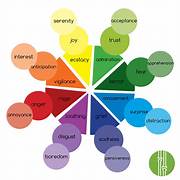As the saying goes, “first impressions matter.” When it comes to websites, the first thing that catches a visitor’s eye is the color scheme. The right combination of colors can evoke emotions and create a mood, which can greatly influence a user’s perception of a website. This is where the psychology of color in web design comes in.
In this article, we will explore the psychology of color in web design and how to choose the right color palette for your website.
Understanding the psychology of color
Colors can evoke different emotions and feelings. For example, red can evoke passion, excitement, and urgency, while blue can evoke calmness, trust, and professionalism. Web designers can use this knowledge to influence users’ perception of a brand and encourage them to take certain actions.
Choosing the right color palette for your website
When choosing a color palette for a website, web agency in Mauritius consider several factors, including the brand’s personality, target audience, and the website’s purpose. Here are some tips on how to choose the right color palette for your website:
- Consider your brand’s personality
Your brand’s personality should be reflected in the color palette you choose for your website. For example, a brand that wants to convey trustworthiness and professionalism may choose a blue and white color palette, while a brand that wants to evoke excitement and playfulness may choose a bright and bold color palette.
- Consider your target audience
Different age groups, genders, and cultures may respond differently to certain colors. For example, research shows that women tend to prefer blue, purple, and green, while men tend to prefer blue, green, and black. It is important to consider your target audience’s preferences and cultural background when choosing a color palette for your website.
- Consider the website’s purpose
The purpose of your website can also influence your color palette. For example, a website that sells luxury products may choose a black and gold color palette to evoke elegance and sophistication, while a website that promotes eco-friendly products may choose a green color palette to convey a sense of sustainability and environmental awareness.
- Use color psychology to your advantage
As mentioned earlier, colors can evoke different emotions and feelings. Use this knowledge to influence users’ perception of your brand and encourage them to take certain actions. For example, using red for call-to-action buttons can create a sense of urgency and encourage users to take action.
- Use contrast to create hierarchy
Contrast can be used to create a visual hierarchy and guide users’ attention to important elements on the website. For example, using a bold color for headlines can make them stand out and draw users’ attention.
The psychology of color in web design is an important consideration for web agency Mauritius. At Web Agency Mauritius they can create a color palette that effectively communicates your brand’s message and encourages users to take action.

